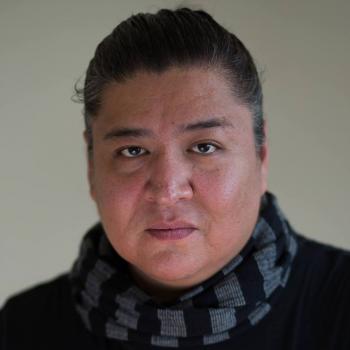Image Caption
By Andrea Smith
Windspeaker.com Contributor
TORONTO
A new exhibit called By Invitation Only; Dance, Confederation, and Reconciliation, examines the exploitation of women and Indigenous people during official talks in the making of Canada.
In 1864, Canada was just becoming a country. A series of discussions were taking place in regards to the Confederation of the nation, in Charlottetown, P.E.I. and Quebec City, Que.
Women and Indigenous people were largely unseen at the time, and certainly unheard, except for the occasions where they were invited to dance to the benefit of the talks.
Dance Collections Danse in Toronto, a theatre and dance archives company, explores this issue with a new exhibit which launches Saturday June 24.
“I read an article in a magazine called Canada History magazine, and it was about the fact that there were three balls (dance parties) held at the same time as Confederation talks. I was intrigued by the fact that dance and women were essential for networking purposes, but their voice was not heard,” said Amy Bowring, director of Collections and Research at DCD.
“And then I thought about how (Indigenous) dances were banned after Confederation, so I thought these are two narratives around the idea of Confederation that we don’t talk about. Lots of people don’t know these happened,” she said.
Bowring and her team includes Indigenous people in this exhibit, because they were also invited to dance at balls for European bureaucrats, despite there being a complete ban placed on that kind of activity shortly after Confederation, with the introduction of the Indian Act.
Part of the exhibit will be stationed at DCD in Toronto, and part of it will be a “travelling exhibit,” consisting of panels with writing and photographs, that other organizations are able to borrow and put on display until July 16th.
Troy Emery Twigg is Bowring’s co-curator on the project. He was responsible for putting together a panel on the history of the ban of Indigenous dance, and he curated the majority of the rest of the Indigenous focused exhibit.
Twigg is from the Kainai Nation in Alberta, and while he’s been a dancer, writer, choreographer, and actor for many years, this is the first exhibit he has ever curated.
“Amy contacted me and invited me to be co-curator. She said ‘It’s not my story to tell’ and it had to come from an Indigenous voice,” said Twigg.
“I’ve been working on it for about a year… It’s been really interesting. With some of the artifacts I’ve curated, those works reached out to me, I didn’t find them,” he added, sharing how strongly he felt about including some of the items that crossed his path while putting the show together.
One of the works Twigg is referring to is a bandolier bag by Barry Ace. The bag is given in friendship, he said, so it’s on display because it reminded him of the fact that treaties were signed as an agreement of peace, yet somehow along the way, Canadian officials started outlawing sacred dance and songs in an attempt to “kill” First Nations culture.
Another item Twigg chose for the exhibit is a reproduction of a painting of a real life event, featuring musician Olivia Tailfeathers and her group of young, female Kainai Grassland Singers looking at a Blackfoot traditional women’s dress in a museum display case. The artist is Joan Cardinal.
“The event was bringing the 1800’s dress to the Glenbow Museum. It was repatriated from Scotland. In that event, Joan saw these young girls looking at this dress, almost like magnets stuck on this dress looking at every detail. Joan captured that in her mind, and went away and painted that,” said Twigg.
“The painting is called “When We Saw our Grandmother’s Dress…” The late Dr. Joan Cardinal was very instrumental in getting this dress back to the Blood Tribe,” he said.
Tailfeathers’ buckskin dress and moccasins will be on display as well, and some of her music will be playing in the background. Among other items at the exhibit, there will also be a display of eight modern contemporary dancers and choreographers, from various locations across Canada. The point is to demonstrate how unsuccessful the ban on Indigenous dance was, and to highlight the beauty of what came through, despite it, according to Twigg.
“The idea is to let people know that work is being done and people are beginning to tell their stories. I’m hoping they know there is a true history to this land before colonization… And that we’re resilient people, we survived, and we’re using our ways from the past to continue that work into the future,” said Twigg.
For more information visit the Dance Collections Danse website at http://www.dcd.ca/

